Sulfur oxides - Sulfur dioxide (SO2) and Sulfur trioxide (SO3)
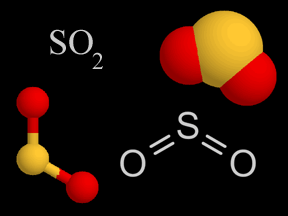
Here are four different ways chemists use to show a molecule of sulfur dioxide. In the colored molecule models, sulfur is yellow and oxygen is red.
Click on image for full size (26 Kb GIF)
Windows to the Universe original artwork by Randy Russell.
|
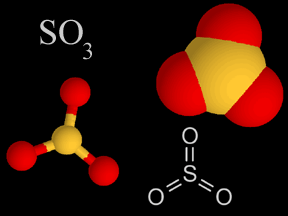
Here are four different ways chemists use to show a molecule of sulfur trioxide.
Click on image for full size (29 Kb GIF)
Windows to the Universe original artwork by Randy Russell.
|
Sulfur dioxide (SO2) and sulfur trioxide (SO3) are two kinds of chemicals. They both have sulfur and oxygen atoms in them. They also are also part of some kinds of air pollution. Scientists use the term "sulfur oxides" when they want to talk about both of these chemicals at once.
Earth's atmosphere has some sulfur oxides in it. Some of the sulfur oxides in the air come from nature. For example, some of it comes from volcanoes. Some of the sulfur oxides in the air are created by people and the things we do. Coal and oil have a bit of sulfur in them. We burn coal and oil to make electricity and heat. When the coal and oil burn, the sulfur in them combines with oxygen in the air to make sulfur oxides.
Sulfur dioxide pollutes the air. It is bad for your lungs and makes it hard to breath. Sulfur oxides also help make acid rain. Sulfur dioxide gets together with water droplets in the air to make sulfuric acid. Sulfuric acid is part of acid rain. Acid rain is bad for plants and fish and other living things.
|
 Sulfuric acid
Sulfuric acid
 Where does air pollution come from?
Where does air pollution come from?
You might also be interested in:
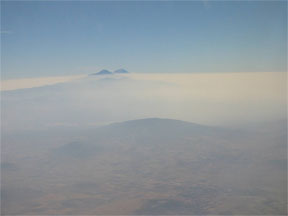
What do smog, acid rain, carbon monoxide, fossil fuel exhausts, and tropospheric ozone have in common? They are all examples of air pollution. Air pollution is not new. As far back as the 13 th century,
...more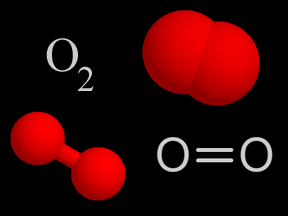
Oxygen (O2) is a kind of gas. A lot of the air you breathe is oxygen. That's a good thing, since we need oxygen to stay alive! About 4/5ths of the air in Earth's atmosphere is nitrogen (N2). Almost all
...more
Acid rain is a general term used to describe different kinds of acidic air pollution. Although some acidic air pollutants return directly back to Earth, a lot of it returns in rain, snow, sleet, hail,
...more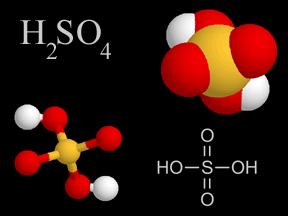
Sulfuric acid is a very common type of acid. Acid rain has sulfuric acid in it. Acid rain harms plants, fish, and other living things. A type of air pollution causes acid rain. When people burn fossil
...more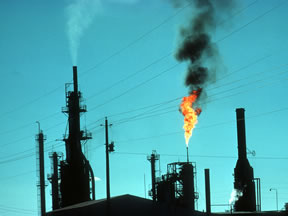
Air pollution comes from many different sources. Natural processes that affect air quality include volcanoes, which produce sulfur, chlorine, and ash particulates. Wildfires produce smoke and carbon monoxide.
...more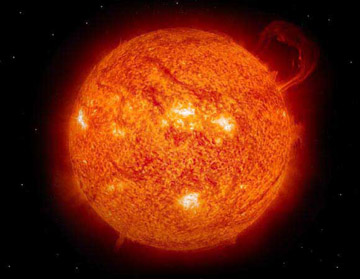
Some of the factors that have an affect on climate, like volcanic eruptions and changes in the amount of solar energy, are natural. Others, like the addition of greenhouse gases to the atmosphere, are
...more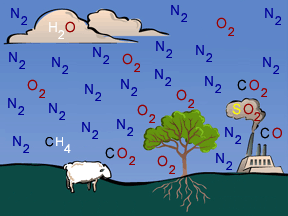
When you think of chemistry, do you think about mixing colored liquids in test tubes and maybe making an explosion... or at least a nice puff of smoke? Did you know that a lot of chemistry happens in Earth's
...more
 Where does air pollution come from?
Where does air pollution come from?
















